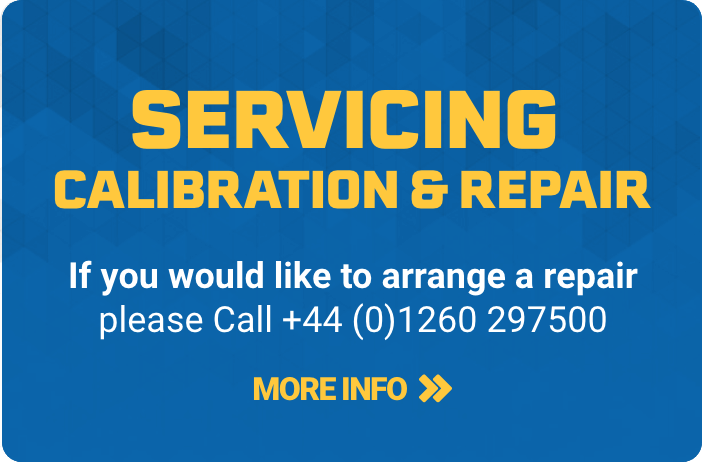Air compressors are essential tools for professional contractors, offering versatility and power for a wide range of applications.
From inflating tyres to powering pneumatic tools, air compressors play a crucial role in various industries.
This air compressor buying guide aims to provide a comprehensive overview, helping you understand their functioning, applications, and the factors to consider when making a purchase.
By the end of this guide, you will be equipped with the knowledge to choose the right air compressor for your needs, ensuring efficiency and productivity in your projects.
How Does an Air Compressor Work?
Air compressors operate on simple principles to convert power into potential energy stored in pressurised air.
The basic mechanism involves an electric motor or gas engine driving a pump, which compresses air and stores it in a tank.
This stored air can then be released through hoses to power various tools and devices.
There are different types of air compressors, each with unique operating methods. The most common types are reciprocating (piston) compressors and rotary screw compressors.
Reciprocating Compressors
These use pistons driven by a crankshaft to deliver high-pressure air.
They are typically found in smaller, portable units and are suitable for intermittent use.
Reciprocating compressors can be single-stage or dual-stage.
Single-stage compressors compress air to its final pressure in one stroke, while dual-stage compressors compress air in two stages, making them more efficient for high-pressure applications.
Rotary Screw Compressors
These use two meshing screws to compress air.
They are known for their continuous operation and are ideal for industrial applications requiring constant air supply.
Rotary screw compressors are more efficient and quieter than reciprocating compressors, making them suitable for large-scale operations.
Key Components and Their Functions:
- Motor: Powers the compressor pump.
- Pump: Compresses the air.
- Tank: Stores the compressed air until needed.
- Pressure Switch: Controls the activation of the pump based on the tank's air pressure.
- Safety Valves: Ensures the system operates within safe limits to prevent over-pressurisation.
Safety Tips for Operating Air Compressors
Operating an air compressor safely is crucial to prevent accidents and prolong the equipment's lifespan.
Always follow the manufacturer's guidelines and wear appropriate protective gear, such as safety glasses and hearing protection.
Ensure the compressor is on a stable surface to prevent it from tipping over.
Regularly inspect hoses and fittings for wear and tear, and replace any damaged parts immediately.
Never bypass safety features, and avoid overloading the compressor beyond its rated capacity.
Proper ventilation is also essential to prevent overheating, especially for gas-powered compressors.
How to Choose an Air Compressor
Selecting the right air compressor involves assessing your specific needs and understanding various technical specifications.
Assessing Your Needs
Identify the primary tasks you will be using the compressor for, such as inflating tyres, running pneumatic tools, or industrial applications.
This will help determine the required power and capacity.
For example, light tasks like inflating tyres may only require a small portable compressor, while running heavy-duty tools in an industrial setting would necessitate a larger, more powerful unit.
Understanding Specifications
- Pounds per Square Inch (PSI): Indicates the pressure level the compressor can achieve. Higher PSI is necessary for heavy-duty tasks that require more force.
- Cubic Feet per Minute (CFM): Measures the volume of air the compressor can deliver. Higher CFM is required for tools that consume more air, ensuring they operate efficiently without interruption.
- Horsepower (HP): Reflects the power of the compressor's motor. More HP generally means greater performance and the ability to handle more demanding tasks.
Comparing Portable vs. Stationary Compressors
Portable compressors are compact and easy to transport, making them ideal for smaller jobs and on-site work.
They typically have lower capacities and are suitable for tasks that don't require continuous air supply.
Stationary compressors, on the other hand, are larger and offer higher capacity, making them suitable for workshop or industrial use where a constant and high-volume air supply is needed.
Evaluating the Power Source
The power source is another major consideration.
Electric compressors are more common and suitable for indoor use due to their quiet operation and zero emissions.
They are generally more convenient for regular use as they can be plugged into standard electrical outlets.
Gas-powered compressors provide more power and are ideal for outdoor use but require more maintenance and produce exhaust fumes.
They are often used in remote locations where electrical power may not be available.
For instance, this Mountz 220v Air Compressor is perfect for indoor tasks, while this Mountz 110v Air Compressor suits smaller, portable applications.
Uses of Air Compressors
Air compressors are incredibly versatile, finding use in a variety of settings. Here are some common applications:
Household Uses
Air compressors are handy for inflating tyres, sports equipment and inflatable furniture.
They can also power tools like nail guns, airbrushes, and pressure washers.
For instance, a small portable compressor can easily handle tasks like inflating bike tyres or blowing dust out of electronics.
Industrial Applications
In manufacturing and construction, compressors power a range of pneumatic tools such as drills, hammers and grinders.
They are essential for tasks that require consistent, high-pressure air supply, such as operating assembly line machinery or spray painting large surfaces.
Automotive and Repair Shops
Compressors are crucial in automotive maintenance for tasks like spray painting, running impact wrenches, and inflating tyres.
They allow for efficient operation and precision in repair jobs.
For example, a medium-sized compressor can power multiple pneumatic tools simultaneously in a busy auto repair shop.
Creative and Unique Uses
Beyond practical applications, air compressors are used in creative fields like art and sculpture, where they power airbrushes for detailed painting.
They are also employed in hobbyist workshops for various DIY projects, such as building furniture or crafting intricate models.
Understanding the diverse uses of air compressors helps in choosing the right model tailored to your specific needs; whether for professional or personal use, the right compressor improves efficiency and productivity.
Air Compressor Fitting Types
Choosing the right fittings for your air compressor is crucial for ensuring compatibility with various tools and accessories.
Here's an overview of the different fitting types and their uses:
Quick-Connect Fittings
These are the most common and user-friendly fittings.
They allow for fast and easy attachment and detachment of air hoses and tools.
Quick-connect fittings are ideal for applications requiring frequent tool changes, such as in automotive repair shops or construction sites where different tools are used continuously.
Threaded Fittings
These provide a more secure and permanent connection.
They are often used in industrial settings where durability and reliability are needed.
Threaded fittings come in various sizes and thread types ensuring a tight seal that can withstand high pressures.
Push-to-Connect Fittings
These fittings are designed for easy installation and removal without the need for tools.
They are commonly used in pneumatic systems for quick and reliable connections.
Push-to-connect fittings are particularly useful in applications where frequent disconnections and reconnections are required.
Barbed Fittings
These fittings are used with flexible hoses and require clamps to secure the hose to the fitting.
Barbed fittings are versatile and can be used in various low-pressure applications, such as gardening equipment or simple home projects.
Compatibility with Tools and Accessories
When selecting fittings, ensure there is compatibility with your air compressor and tools.
This includes matching the fitting type, size, and thread pattern.
Using incompatible fittings can lead to air leaks, reduced efficiency, and potential damage to tools and the compressor.
Maintenance Tips for Fittings
For maintenance, regularly inspect fittings for wear and tear, and replace any damaged parts to prevent leaks and allow for efficient operation.
Cleaning fittings periodically can also prevent the build-up of debris that may obstruct airflow.
What Size Air Compressor for Different Jobs?
Selecting the appropriate size of an air compressor is essential for efficiency and effectiveness in different tasks.
Here’s a guide on choosing the right size based on specific applications:
Small Compressors
These are suitable for light tasks such as inflating tyres, running brad nailers, and airbrushing.
They typically have smaller tanks (1-6 gallons) and deliver lower CFM. Small compressors are portable and ideal for DIY enthusiasts and hobbyists.
For example, a 3-gallon compressor is perfect for home garage tasks such as inflating car tyres or operating a small nail gun for carpentry projects.
Medium Compressors
These are versatile and can handle more demanding tasks, including powering framing nailers, impact wrenches and spray guns.
With tank sizes ranging from 7-20 gallons and higher CFM ratings, medium compressors are suitable for both home workshops and small professional jobs.
For instance, a 10-gallon compressor can power multiple pneumatic tools, making it a great choice for contractors who need to perform various tasks on job sites.
Large Compressors
Designed for heavy-duty industrial use, large compressors have tank capacities exceeding 20 gallons and deliver high CFM to power multiple tools simultaneously.
They are essential in automotive repair shops, manufacturing, and construction sites where continuous air supply is needed.
For example, a 30-gallon compressor can support extensive use of tools like grinders, sanders and impact wrenches in a busy auto repair shop.
Understanding Tank Size and Air Capacity
The tank size determines how long you can run a tool before refilling the compressor, while the CFM rating indicates the airflow needed to operate a specific tool effectively.
Higher tank capacities and CFM ratings are necessary for tools requiring a constant and high volume of air.
For instance, a high-capacity compressor is essential for tasks like sandblasting, which requires continuous airflow to maintain efficiency.
By understanding the specific requirements of your tasks, you can choose an appropriately sized compressor that improves productivity and reliable performance.
Air Compressor Features
When purchasing an air compressor, you need to consider both essential and advanced features to make sure you get the best tool for your needs.
Oil-Free Pumps
These require less maintenance and are suitable for indoor use where clean air is required.
Oil-free compressors are also lighter and quieter, making them ideal for home and light commercial use.
Thermal Protection
This feature prevents the compressor from overheating, extending its lifespan and ensuring safe operation.
Thermal protection automatically shuts off the compressor when it reaches unsafe temperatures, preventing damage to the motor and other components.
Programmable Controls
These allow for precise control over pressure settings and operation schedules, improving efficiency.
Programmable controls can be particularly useful in industrial settings where different tools require specific pressure levels for optimal performance.
Dual-Stage Pumps
These compressors offer higher pressure and efficiency, suitable for heavy-duty industrial applications.
Dual-stage pumps compress air in two stages, resulting in cooler operation and greater efficiency, making them ideal for tasks that demand high pressure over long periods.
Benefits of Each Feature
Each feature offers specific benefits.
For example, oil-free pumps are low-maintenance and ideal for home use, while dual-stage pumps provide the high pressure needed for industrial tasks.
Thermal protection gives longevity and safety to the compressor, while programmable controls offer convenience and precision for various applications.
How to Prioritise Features Based on Your Needs
When prioritising features, consider your specific needs.
For occasional use, essential features may suffice, but for professional or industrial use, advanced features will offer greater reliability and efficiency.
For instance, a contractor working on large projects might prioritise dual-stage pumps and programmable controls, while a DIY enthusiast might focus on finding an oil-free pump for ease of maintenance.
Key Considerations When Buying an Air Compressor
Budget Considerations and Cost vs. Benefit Analysis
Setting a budget is crucial when purchasing an air compressor. Balance the cost with the features offered.
While lower-priced models may be tempting, investing in a quality compressor can offer long-term benefits such as durability and better performance.
For example, a mid-range compressor may provide the best balance of cost and features for most professional contractors, ensuring reliable operation without breaking the bank.
Brand Reputation and Customer Reviews
Choosing a reputable brand allows for reliability and quality.
Researching customer reviews can provide insights into the performance and longevity of a compressor.
Well-known brands like DeWalt, Makita, and Ingersoll Rand are trusted for their quality and after-sales support.
Checking customer feedback and professional review sites can help in making an informed decision.
Warranty and Customer Support
Warranty terms are an essential consideration.
A good warranty can save you money on repairs and replacements.
Look for compressors with at least a one-year warranty, and consider extended warranties for added protection.
Reliable customer support from the manufacturer is also essential for troubleshooting and maintenance assistance.
Brands that offer strong customer support can provide peace of mind and any issues are promptly resolved.
Future-Proofing
When purchasing an air compressor, consider your future needs. Opt for models that offer versatility and upgradability.
Modular and expandable systems allow you to add more capacity or features as your requirements grow.
This means your compressor remains useful even as your projects become more complex.
For instance, choosing a compressor with a larger tank and higher CFM rating can accommodate future tasks that require more power and air capacity.
Choosing the right air compressor involves understanding its workings, assessing your needs, and considering various features and specifications.
Hopefully, through this guide, we have covered the essential aspects, from basic principles to advanced features, ensuring you are well-equipped to make an informed decision.
Remember to weigh the benefits of different models, consider future needs, and prioritise quality and reliability. Selecting the right air compressor will improve your efficiency and productivity in all your professional tasks.
For further advice or to explore our products available, feel free to contact us at Heamar.


















